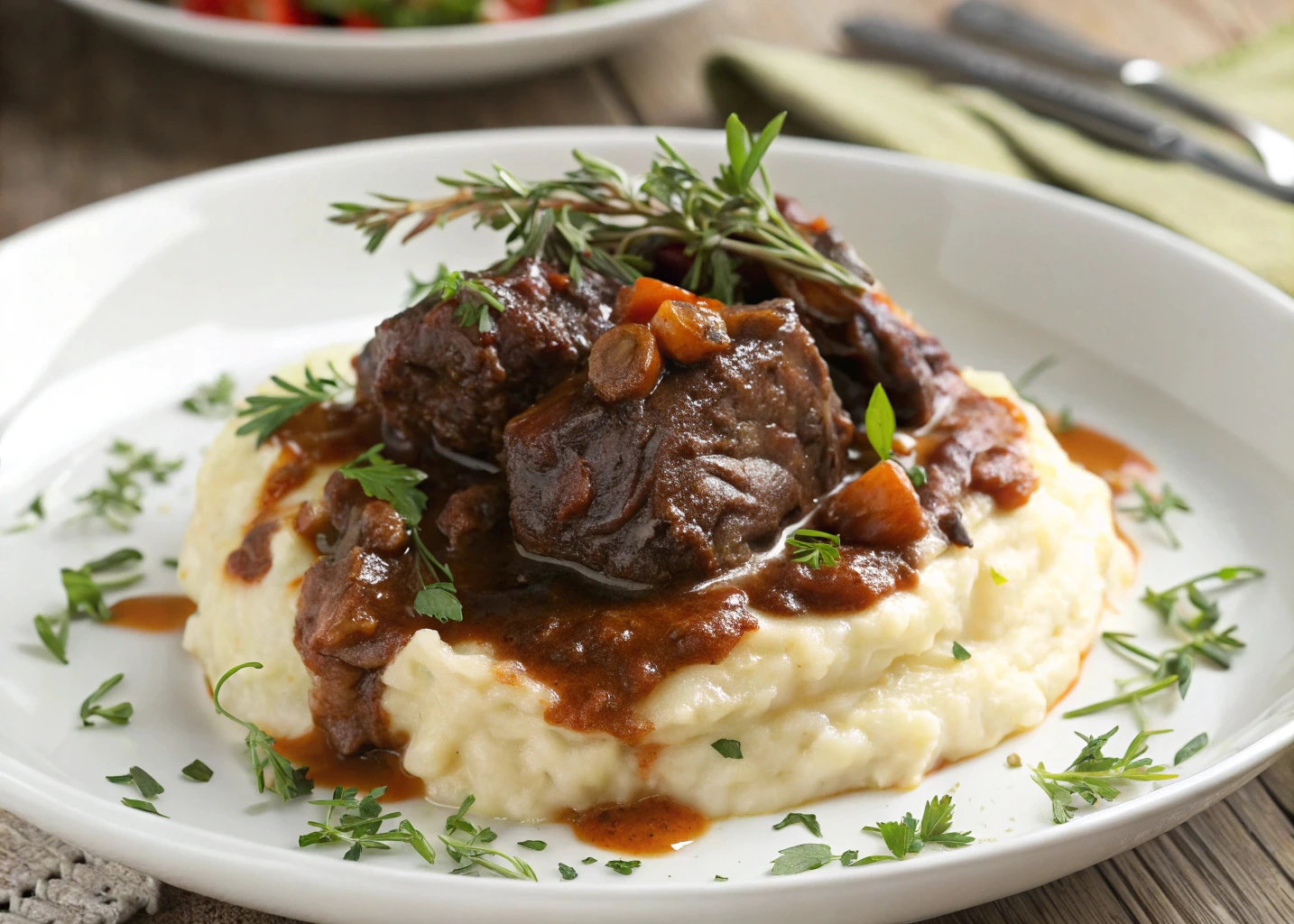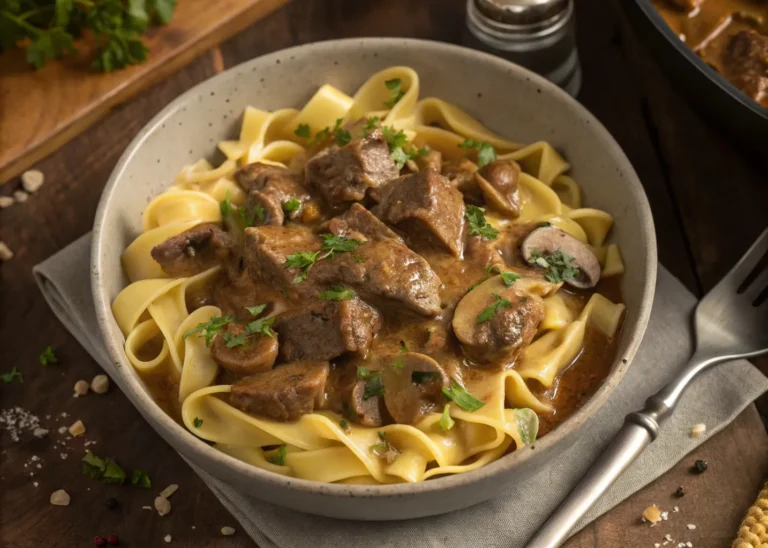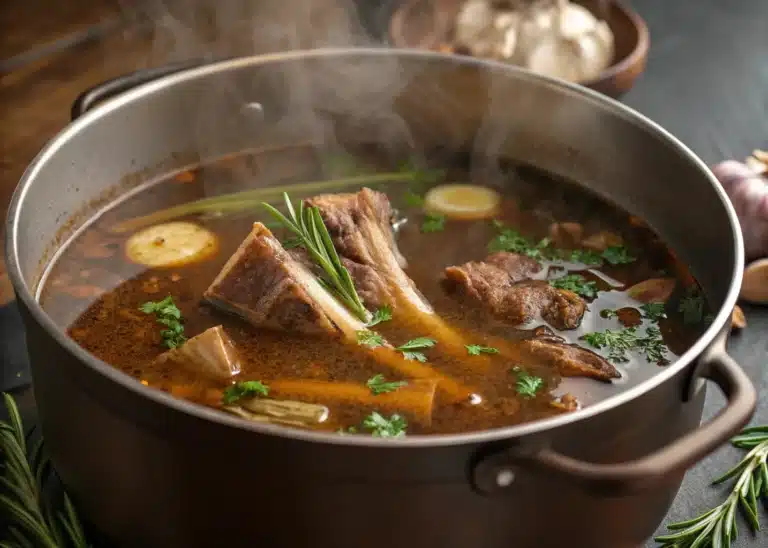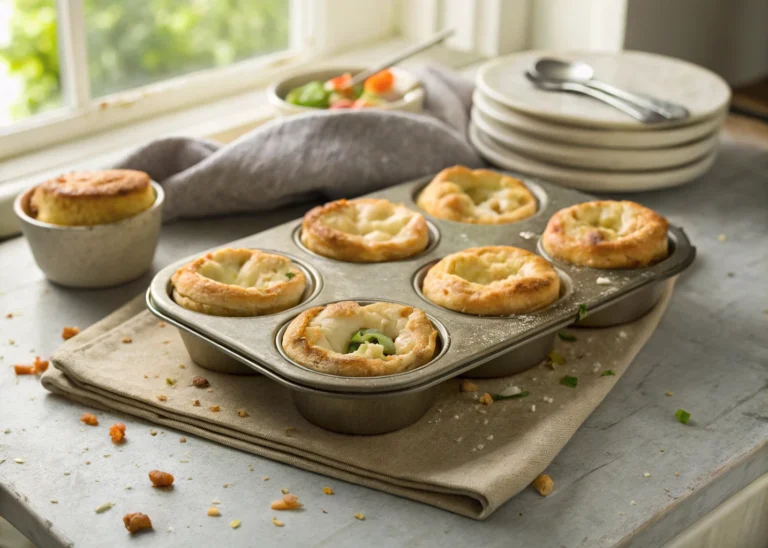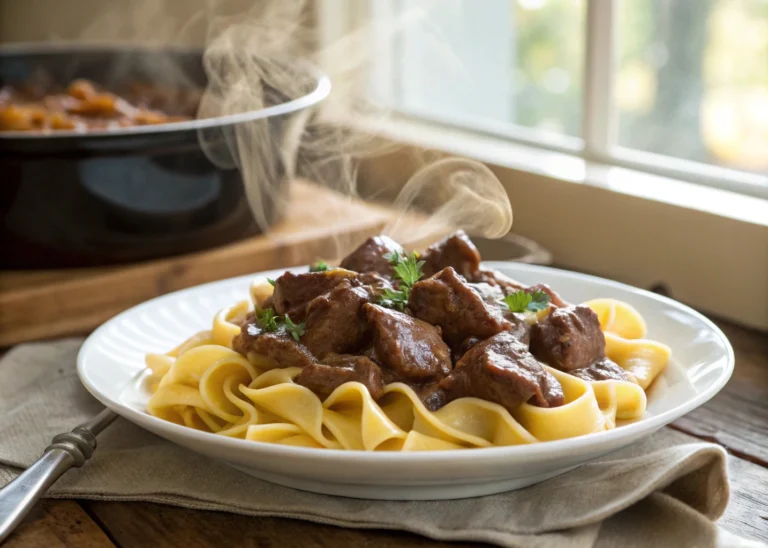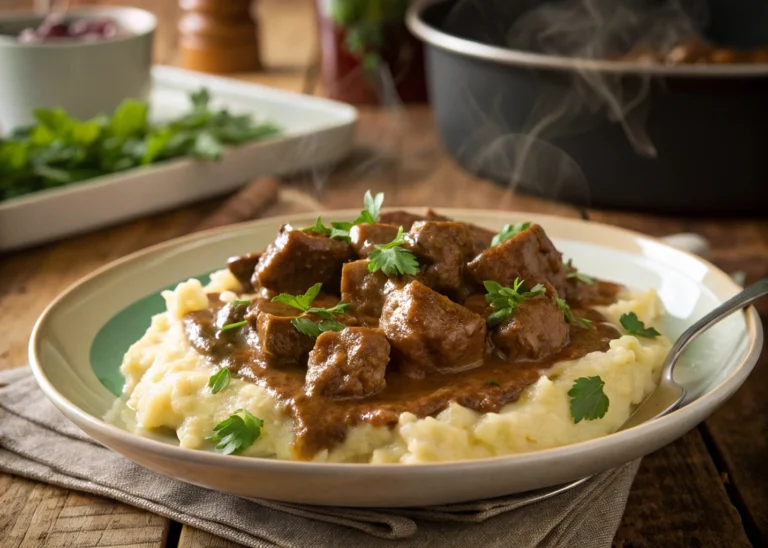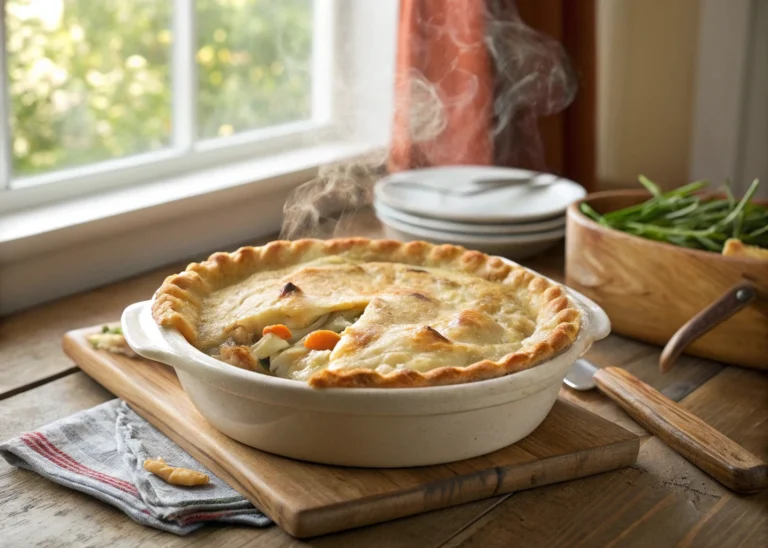Beef Cheeks Recipe That Melts in Your Mouth
There are recipes you cook, and then there are recipes that transform the moment. Beef cheeks are the second kind. The kind of dish that makes people go quiet at the table because they’re too busy savoring every bite. Rich. Tender. Decadent. Yet simple.
This isn’t a trendy dish. It’s an honest, bold, fall-apart kind of meal. And when done right, it tastes like you’ve been slow-simmering your soul all afternoon — in the best way.
Let’s break down exactly why beef cheeks deserve a permanent place in your recipe rotation, and how to make them the star of a deeply satisfying, crave-worthy dinner.
What Are Beef Cheeks and Why They Deserve Your Time
Meet the Cut That’s Quietly Legendary
Beef cheeks aren’t your everyday steak. They’re the unsung hero of slow-cooked comfort — a muscular cut from the cheek of the cow that’s packed with natural collagen. And here’s the magic: when cooked low and slow, that collagen breaks down into a silky, melt-in-your-mouth texture no other cut can match.
They’re affordable, packed with flavor, and versatile enough to work across cuisines — from rustic to refined.
Most people haven’t cooked them. But once they do? They don’t stop.
Why You’ll Crave Them Again and Again
- Unmatched tenderness: Done right, you can cut them with a spoon.
- Savory depth: They absorb flavor like sponges and give it back with interest.
- Budget-friendly: You’re getting gourmet results without the high-end price tag.
- Real comfort food: The kind that warms your chest and sticks to your memory.
- Meal-prep gold: Stores beautifully, reheats even better.
This is the cut that makes people say, “What IS this?!” — and then ask for seconds.
Table of Contents
How to Choose Beef Cheeks Like a Pro
The Butcher’s Secrets: What to Look For
Want a top-tier result? Start with the right cheeks. Here’s what makes the difference:
- Color: Deep, rich red is what you want.
- Marbling: A little fat is good — it means flavor.
- Size: Select cheeks with similar thickness for even cooking.
- Texture: They should feel firm and slightly springy to the touch.
- Moisture: Avoid dry edges or sliminess — that’s a red flag.
Pro tip: Ask your butcher for whole cheeks, untrimmed. You’ll get more flavor and more control over the prep.
Where to Buy (If Not Your Local Butcher)
If your butcher doesn’t stock them (some don’t), check:
- Ethnic markets: Latin American and Asian butchers often carry cheeks.
- Farmers markets: Especially those with whole-animal butchers.
- Online meat providers: Look for grass-fed options, delivered frozen and vacuum-sealed.
Ingredients That Keep It Real (and Seriously Good)
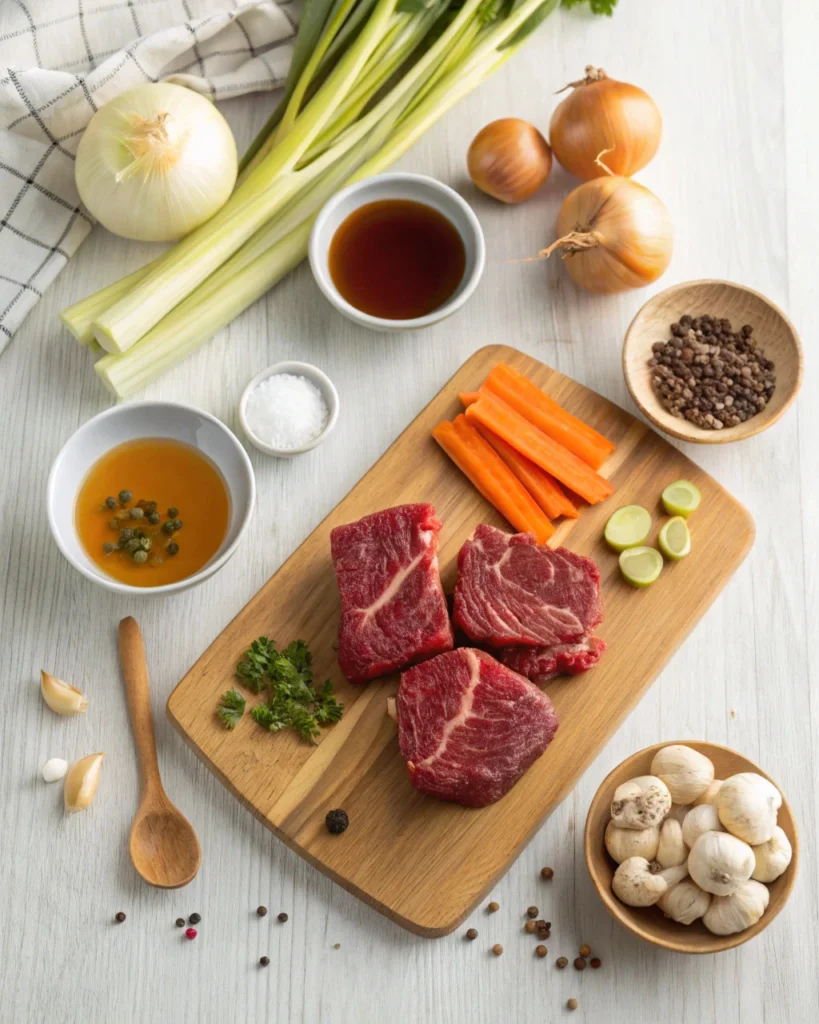
This Recipe Isn’t About Tricks — It’s About Balance
We’re not covering up the beef cheeks. We’re building a deep, rich background that complements their natural intensity — with clean, pantry-friendly ingredients and technique-driven cooking.
Here’s what you need:
| Ingredient | Amount |
|---|---|
| Beef cheeks | 2.5 to 3 lbs |
| Olive oil | 2 tablespoons |
| Yellow onion | 1 large, chopped |
| Carrots | 2 medium, sliced |
| Celery | 2 stalks, chopped |
| Garlic | 4 cloves, minced |
| Tomato paste | 2 tablespoons |
| Beef broth | 3 cups (low sodium) |
| Bay leaves | 2 |
| Dried thyme | 1 teaspoon |
| Smoked paprika | 1 teaspoon (optional) |
| Kosher salt | To taste |
| Black pepper | To taste |
That’s it — no fluff, no filler. Just ingredients that cook low and slow into something unforgettable.
Flavor Boosts That Add Depth Without Noise
Want to elevate the dish? Here’s how to do it without overcomplicating:
- Fresh rosemary: Add a sprig or two while braising.
- A touch of balsamic or pomegranate molasses at the end: Adds brightness.
- Roasted garlic cloves: For a smoother, mellow undertone.
- Extra veggies: Think leeks, parsnips, or sweet potatoes for earthiness.
This is real food — slow-simmered, soulful, and rich with intention.
For deeper flavor, consider replacing store-bought broth with our homemade beef bone broth recipe — it adds collagen, richness, and depth that elevate the final dish.
Prepping Beef Cheeks the Right Way — No Guesswork
Trim Smart. Don’t Overdo It.
Here’s the truth most recipe sites skip: how you prep the cheeks determines how they cook.
Lay the cheeks on a board. You’ll see silver skin — that thin, silvery-white membrane covering some areas. Grab a sharp boning knife and slip it just under the surface. Work slowly. Remove the silver skin and any thick, rubbery connective tissue that won’t break down. Leave the fine threads and inner marbling — that’s what turns into that rich, melt-in-your-mouth texture.
Don’t go trimming all the fat off either. You want to respect the cut, not strip it down to nothing. A little fat = a lot of flavor.
Season Like You Mean It
This is where the depth starts. Beef cheeks don’t need fancy marinades — they need smart, simple seasoning that brings out their core strength.
Before cooking, pat dry and season both sides generously with:
- Kosher salt
- Coarsely ground black pepper
- A whisper of smoked paprika (adds subtle depth)
- Optional: a pinch of dried thyme or garlic powder
Let them sit at room temp for 15–20 minutes. This not only helps the seasoning penetrate but also ensures a better sear.
Cooking Beef Cheeks to Fall-Apart Perfection
Sear First. Always.
Heat 2 tablespoons of olive oil in a heavy-bottomed Dutch oven over medium-high. When the oil’s shimmering, it’s ready.
Lay in the beef cheeks — don’t crowd the pot — and let them sear undisturbed for 3–4 minutes per side until a deep brown crust forms. That golden sear builds the foundation of flavor you’ll carry through the entire dish.
Remove and set aside.
The Flavor Base You Can’t Skip
Now drop the heat slightly and add:
- Chopped onion
- Sliced carrot
- Chopped celery
Sauté for 5–6 minutes until everything softens and browns slightly. Then add minced garlic — cook just 60 seconds until fragrant. Next: stir in tomato paste and cook it down until dark and sticky. That’s when the real flavor hits.
This isn’t filler. It’s the heart of your sauce.
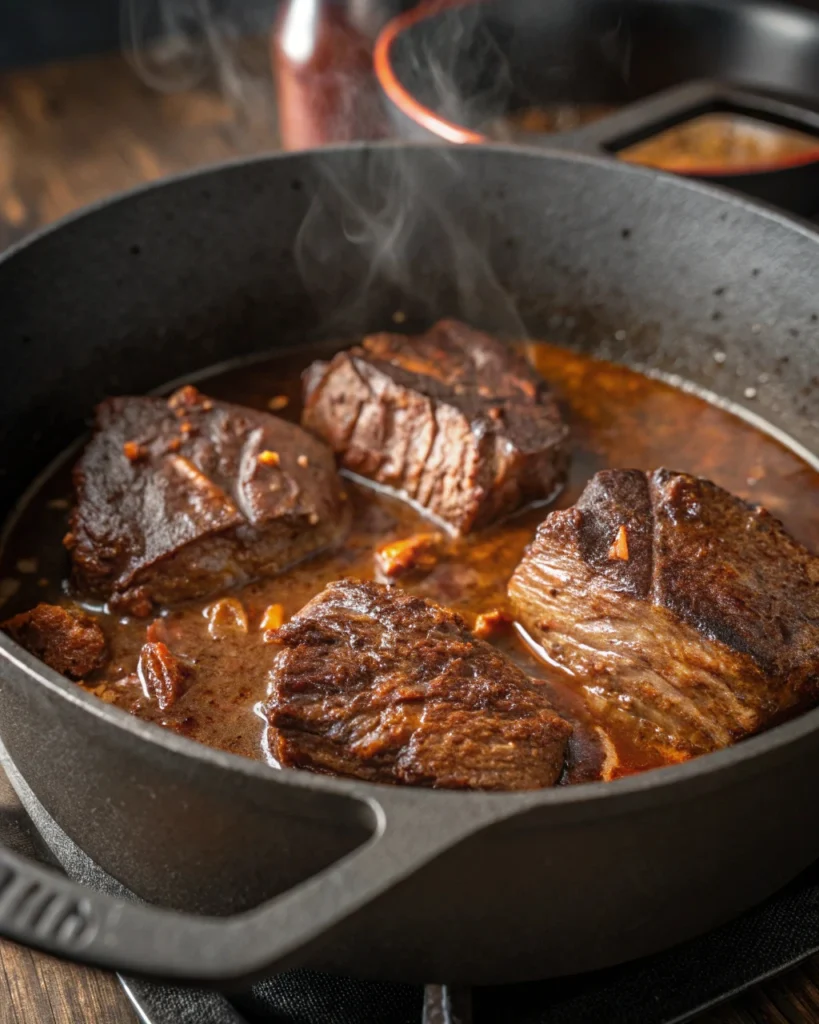
Braising Brilliance
Pour in the beef broth. Stir to release every bit of fond — the browned bits stuck to the bottom. That’s flavor gold.
Add the beef cheeks back in, nestled into the pot. Toss in:
- 2 bay leaves
- 1 teaspoon dried thyme
- Salt and pepper to taste
The broth should come up ¾ of the way over the meat. Bring to a simmer, then cover tightly.
Now:
- On the stovetop: Let it barely bubble on low for 3 to 3.5 hours
- In the oven: Bake at 300°F (150°C) for 3 to 3.5 hours, covered
You’ll know it’s ready when the cheeks yield with just a fork. They shouldn’t just fall apart — they should melt.
The Sauce Matters Too
Once cooked, pull the cheeks out and let them rest. Simmer the remaining sauce uncovered for 10–15 minutes to reduce and intensify. Spoon it back over the cheeks when serving, or blend it smooth for a restaurant finish.
The Perfect Sides for Beef Cheeks
Starches That Soak Up the Sauce
Let’s be real: the gravy here is gold. You want a base that catches every drop. These sides do the job right:
- Creamy mashed potatoes – the classic, no-brainer move
- Buttery polenta – rich, soft, and just the right contrast
- Steamed jasmine or basmati rice – light, fragrant, and keeps it simple
- Rustic crusty bread – slice thick, dip deep
Whatever you pick, make sure it’s absorbent. This isn’t the time for dry grains or delicate greens.
Veggies That Brighten the Plate
Beef cheeks bring the richness. Your sides should bring the balance. Here’s how to keep the plate fresh:
- Roasted carrots or parsnips – earthy and naturally sweet
- Sautéed greens (spinach, kale, chard) – add contrast and a touch of bitterness
- Lightly dressed arugula salad – peppery and crisp
Want to impress? Serve cheeks over mashed potatoes, top with reduced sauce, and garnish with chopped parsley or fresh thyme. It’s dinner party-worthy — and easier than it looks.
How to Store and Reheat Beef Cheeks Like a Pro
Make Once. Eat Twice (or More)
The beauty of beef cheeks? They reheat like a dream. In fact, many say the flavor deepens overnight. So don’t stop at one meal — make a little extra and stash some away for another day.
Here’s how to keep every bite perfect:
- Refrigerator: Once fully cooled, store in an airtight container with the sauce. Keeps fresh for up to 4 days.
- Freezer: Divide into portions (cheeks + sauce), pack in freezer bags or sealed containers. Label and date. Holds beautifully for up to 3 months.
Tip: Freeze them with a little extra sauce to keep the moisture in.
Reheating That Keeps It Tender
Warming up beef cheeks the wrong way? You risk undoing all that slow-cooked magic. Use these foolproof methods instead:
- Stovetop: In a covered pan with a splash of broth. Medium-low heat. Stir gently until warmed through.
- Oven: Place in a small baking dish, cover tightly with foil. Reheat at 300°F for 20 minutes.
- Microwave: Use a covered, microwave-safe dish. Medium power, short bursts, stir in between.
Rule of thumb: keep the heat low, and never reheat uncovered or dry.
Common Mistakes to Avoid (And How to Nail It Every Time)
Even the best cuts can flop with the wrong approach. Here’s what to steer clear of — and how to fix it.
Mistake 1: Skipping the Sear
Browning the cheeks is non-negotiable. That crust builds a flavor base you can’t replicate later. Searing locks in richness and adds dimension. Don’t skip it. Don’t rush it.
Mistake 2: Not Trimming Properly
Leave too much connective tissue and you’ll get chewy bites. Remove the silver skin, but don’t over-trim the fat. You want balance — flavor without gristle.
Mistake 3: Using the Wrong Pot
Thin-bottomed pots or shallow pans just won’t cut it. You need a heavy, deep Dutch oven or braising dish to control heat and hold in moisture. This is low-and-slow territory.
Mistake 4: Not Reducing the Sauce
You didn’t wait hours for a watery sauce. Pull the cheeks out and let that liquid simmer uncovered for 10–15 minutes. It thickens. It concentrates. It transforms.
Easy Flavor Twists That Keep It Fresh
Once you’ve mastered the basics, play with the details. These variations respect the core of the dish while adding new life.
Rustic Tomato & Herb Style
Add a can of crushed tomatoes with the broth and swap thyme for oregano. Let it simmer down to a rich, thick ragu. Serve over pappardelle or polenta.
Sweet & Savory Root Veg Version
Toss in cubed sweet potatoes, parsnips, or rutabaga. Their natural sweetness balances the savory sauce. Great with rice or rustic mash.
Garlic-Lover’s Dream
Double the garlic. Roast a head separately and mash it into the sauce before serving. Adds a smooth, buttery background that feels gourmet.
Smoky Paprika & Carrot Base
Dial up the smoked paprika and add extra carrots. It leans into warmth, body, and color. Spoon it over couscous or pearl barley for a modern twist.
These aren’t complications. They’re elevations. Once you understand how beef cheeks cook, you’ve got freedom to riff without wrecking the base.
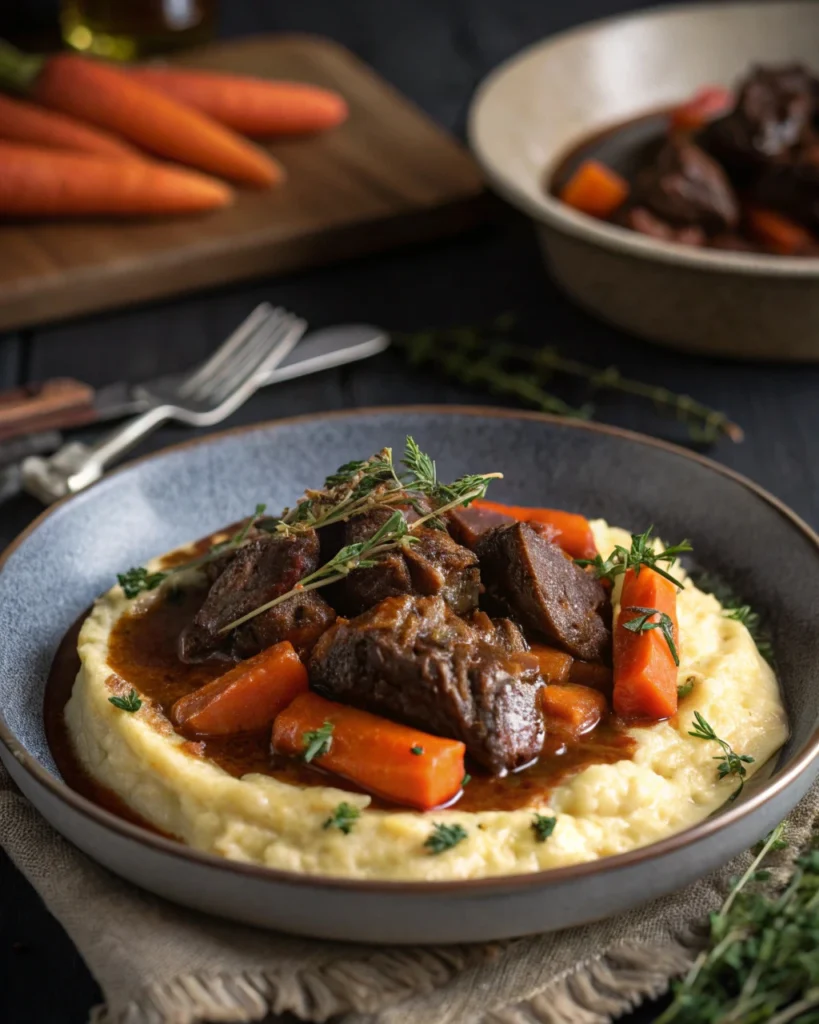
Frequently Asked Questions
Are beef cheeks hard to cook?
Not at all. They need time, not technique. Once you master the slow-cook method, beef cheeks are one of the easiest cuts to prepare — and the results are always impressive.
What makes beef cheeks so tender?
It’s the collagen. Beef cheeks are rich in connective tissue that melts during cooking, creating a silky, spoon-tender texture that’s unmatched.
Can I make beef cheeks ahead of time?
Yes. They’re even better the next day. Make ahead, chill, and reheat gently for deep, developed flavor.
What’s the best side dish for beef cheeks?
Mashed potatoes are the classic choice, but polenta, rice, or even roasted root veggies work beautifully with the rich sauce.
Can beef cheeks be frozen after cooking?
Absolutely. Freeze in individual portions with sauce. They reheat beautifully, making them perfect for meal prep or future gatherings.
Conclusion: Slow Down, Savor More
Beef cheeks aren’t just another recipe — they’re a reminder of what food should be. Honest. Bold. Slow. Made with care and served with heart. This dish rewards patience with richness, depth, and comfort that lingers long after the plate is clean. Whether you’re cooking for your family, hosting friends, or just craving something that hits deeper than a quick bite, this beef cheeks recipe delivers every single time.
So don’t rush it. Let it simmer. Let it transform. And when you serve it, know you’ve made something unforgettable — the kind of meal people remember, ask for, and come back to.
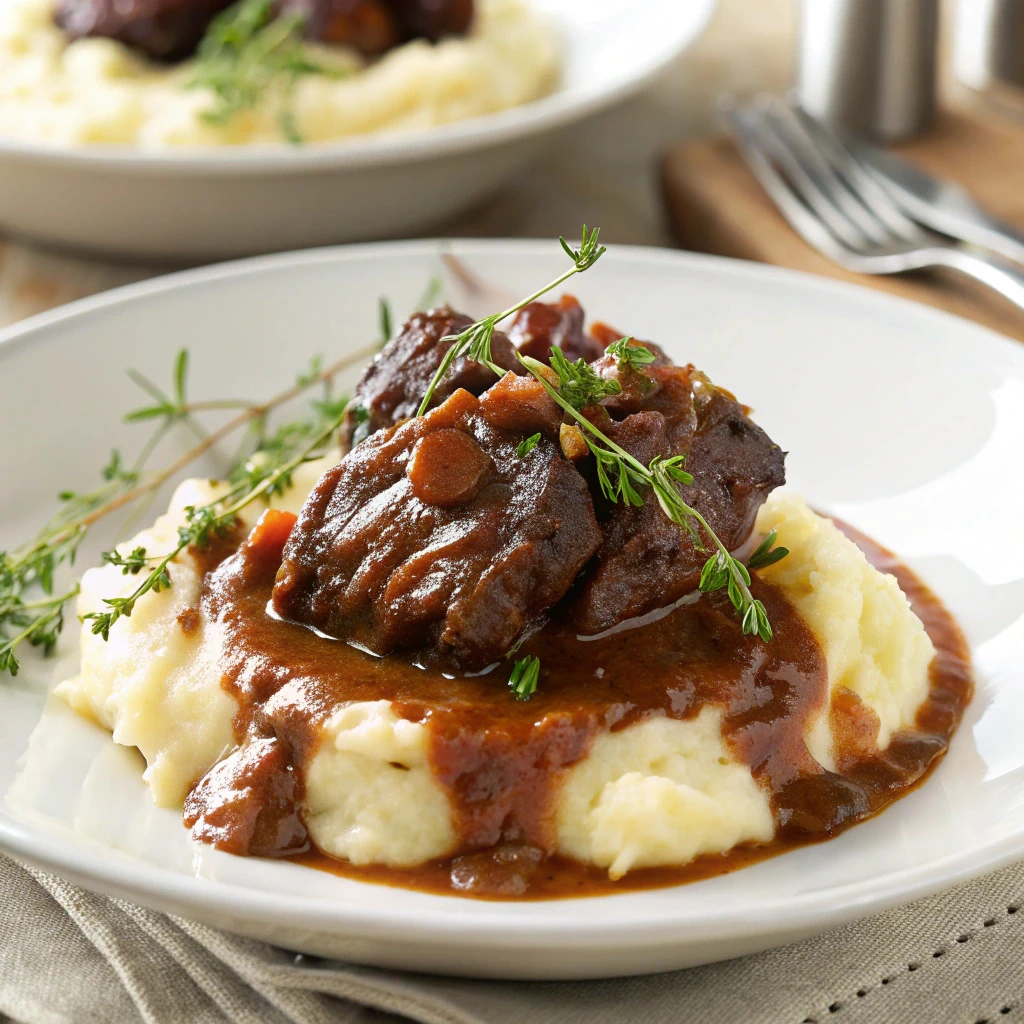
Slow-Cooked Beef Cheeks
Ingredients
Equipment
Method
- Trim beef cheeks, removing silver skin and excess connective tissue. Pat dry and season both sides with salt, pepper, and optional smoked paprika.
- Heat oil in a Dutch oven over medium-high heat. Sear beef cheeks until browned on both sides, 3–4 minutes per side. Remove and set aside.
- Add onion, carrots, and celery to the pot. Sauté until softened, about 5–6 minutes. Stir in garlic and tomato paste; cook until fragrant.
- Pour in beef broth, scraping up browned bits from the bottom. Add bay leaves, thyme, and return beef cheeks to the pot.
- Cover and simmer on low for 3 to 3.5 hours or bake at 300°F. Check for fork-tender texture.
- Remove cheeks, reduce sauce for 10–15 minutes uncovered. Serve cheeks over mashed potatoes with sauce on top.
Notes
- For extra richness, use roasted garlic or add fresh rosemary while braising.
- Store leftovers with sauce in the fridge up to 4 days.
- Freeze in airtight containers up to 3 months.
- Reheat gently on stovetop or in oven to preserve texture.

